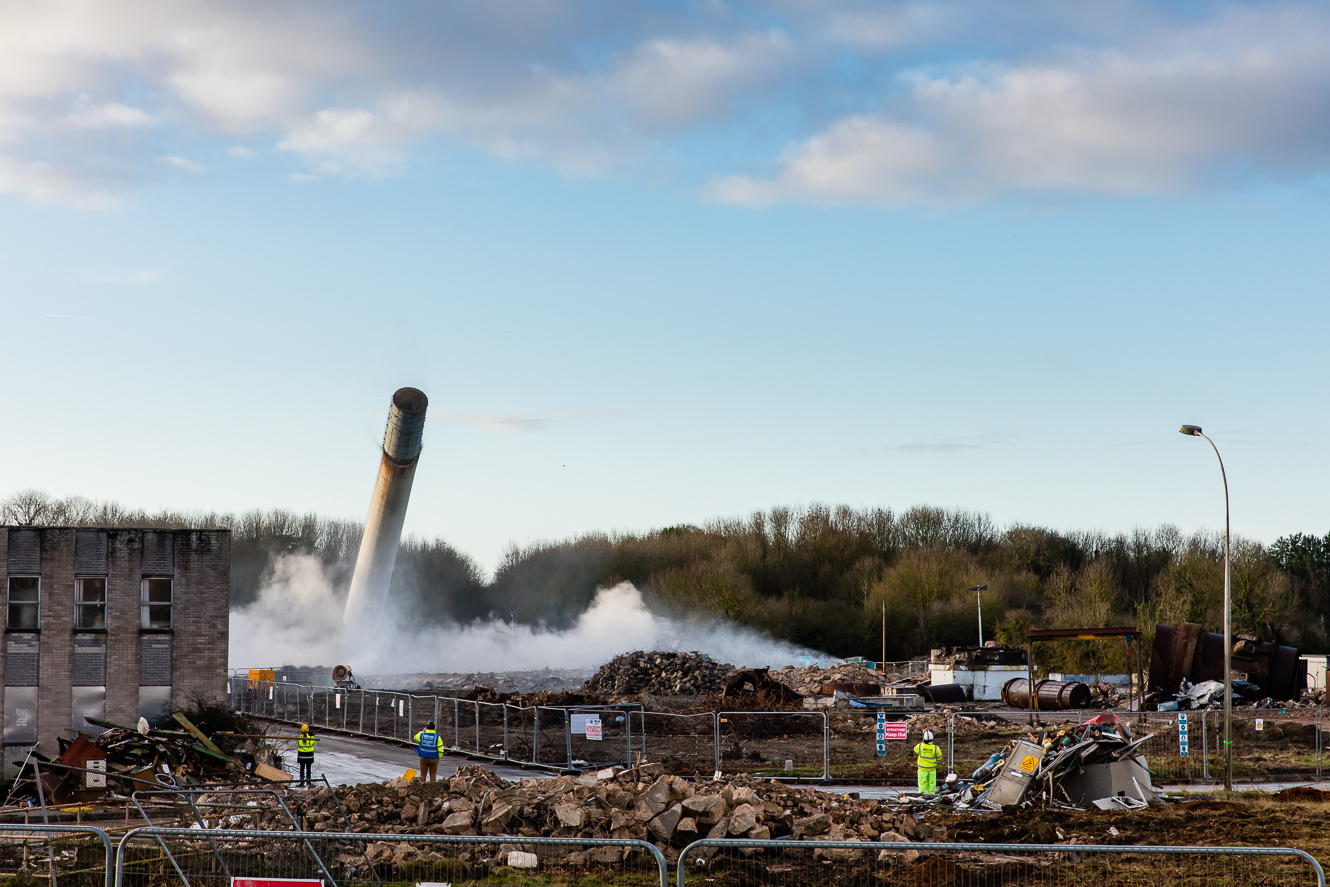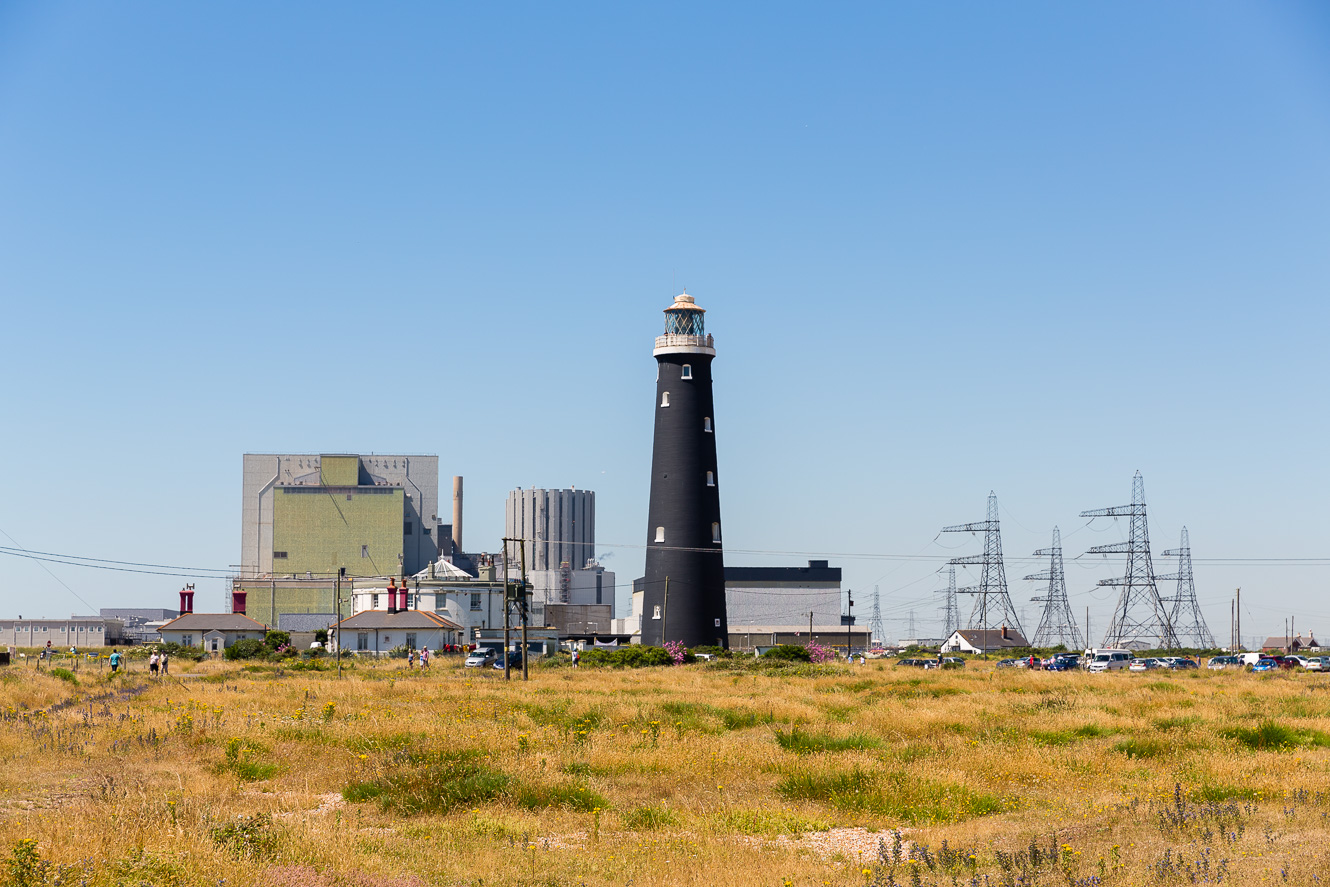This solution enabled our demolition team to assimilate all movement and data trends during the pre-weakening phase, ensuring a safe and successful blow down.
To ensure the safest possible approach to the work, we placed a series of prism targets to the superstructure prior to any pre weakening works. These were linked to a monitoring station calibrated to 0.1mm movement monitoring capacity. This gave us the capacity to formulate a model which enabled the assessment of stresses caused by the environmental factors, pre-weakening and eventual blow down.
We utilised Midas GEN software to build the model, enabling a structurally safe method to be devised. Pre-weakening was designed by our in-house demolition engineers working safely and hand-in-hand with explosive engineers. Structural engineers then checked this sequence, and an independent category three check was carried out. Ranges of acceptable movement and action plans were produced as a result of this work.
With the sequence and methodology approved, a 240-point quality plan ensured that the pre-weakening sequence and plan were strictly adhered to. Throughout the entire pre-weakening work, the superstructure was constantly monitored by the total station, which was 4G linked to the site manager and site engineers’ mobile phones and laptops. This immediately informed the team of any movements during pre-weakening and allowed totally engineered and safe control of the pre-weakening work prior to the final blow.
In anticipation of the planned demolition, a pragmatic approach was aided with support from sentries, experienced supervisors, and specialist engineering resources. This, in turn, enabled complete clearance of the site prior to a spectacular explosive event, resulting in the safe and deliberate demolition of the structures.
Precision Demolition designed the deliberate collapse mechanism using explosives under BS5607: Code of practice for the safe use of explosives in the construction industry.
The overall design was optimised for the most efficient use of explosives by structural pre-weakening. Pre-weakening works were undertaken in-house by trained and competent burners familiar with this variety of work, under the supervision of the explosive engineer.
We placed shims into the resultant voids where flame cutting techniques were used to prevent movement or distortion. Due consideration was given to the effects of the high levels of vibration generated when Heat-Recovery Steam Generators (HSRGs) impact the ground. This was to minimise air overpressure. The potential for ricochet and spread of debris was considered when determining the size of the exclusion zone required.
Blast protection was designed, and containment measures were implemented including bags, blast wrapping and chain link fencing.
Explosive placement design and detonation sequence and delay periods ensured that mechanical disruption of undetonated charges did not occur, that the structure was not weakened in the vicinity of undetonated charges, and that the robustness of the blast protection was not compromised.
The delay detonation sequence was conceived to reduce potential high levels of air overpressure. Both kicking and cutting charges were used to displace pre-cut supports, removing structural support without causing fragmentation.
A Blow Down Manual was developed detailing:
- Key personnel roles and responsibilities
- Exclusion zoning and zone management, i.e. sentry placement
- Timeline of events leading to the controlled explosion
- Contingency statements, site plans and risk assessments
Environmental monitoring was also deployed to ensure compliance with current legislation and as part of our stakeholder engagement plan.



